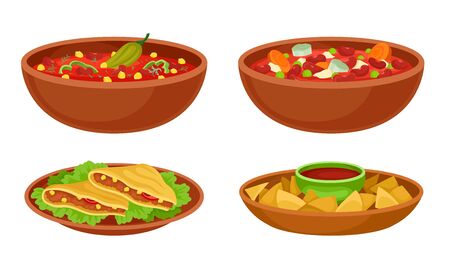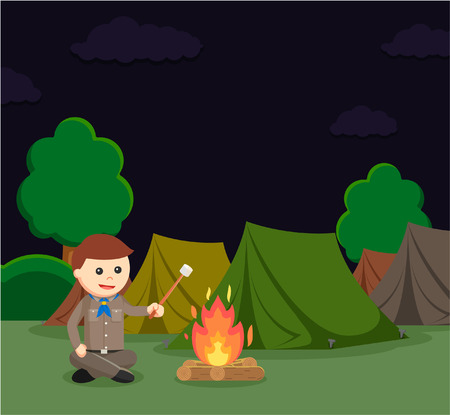Essential Gear for Group Cooking
When it comes to cooking spicy biryani and pulao for a group during an Indian camping adventure, having the right gear makes all the difference. For our rugged terrains—from the rocky ghats to sandy riverbanks—you’ll need reliable, sturdy equipment that can handle the desi way of outdoor cooking. First and foremost, invest in a large aluminium or stainless steel handi (deep cooking vessel) or pressure cooker, as these are perfect for layering rice and masala, ensuring every grain gets that authentic flavour. A portable LPG stove or a compact butane gas burner is a must, especially since open fires are not always permitted at campsites across India. Don’t forget heavy-duty tongs (chimta), a wide slotted spoon (jharna), and a big ladle for stirring the rice without breaking it. For prep work, carry a sharp desi knife (chakku), chopping board, and a masala dabba (spice box) loaded with essentials like garam masala, red chilli powder, turmeric, and bay leaves. Large mixing bowls come handy for marinating meats or veggies on the go. Make sure to pack enough stainless steel plates, katoris (small bowls), and tumblers for everyone in your group—sturdy enough to survive a few drops on rocky ground! Finally, carry a foldable table or spread out a clean dhurrie for setting up your temporary kitchen. With this essential gear sorted, you’ll be ready to whip up piping hot biryani and pulao under the stars, just like home but with an extra dose of adventure.
2. Sourcing Fresh Ingredients on the Go
When youre setting up camp anywhere from the lush Western Ghats to the arid plains of Rajasthan, getting authentic Indian flavors for your biryani and pulao starts with smart sourcing. Indias roadside villages and bustling highway dhabas are treasure troves for fresh ingredients. Here’s how you can gather everything you need like a local pro:
Hit the Local Bazaars Early
Village markets (sabzi mandis) open early and stock the freshest veggies—think crunchy carrots, green peas, potatoes, onions, tomatoes, and coriander. Bargain a bit; it’s part of the Indian experience! For proteins, look for eggs, paneer (cottage cheese), or freshly cut chicken at local butchers. If you’re near coastal regions, opt for just-caught fish.
Highway Dhaba Tips
Many Indian highway dhabas sell basic provisions to truckers and travelers. Ask for “biryani rice” (short-grain seeraga samba in Tamil Nadu or basmati up north). You’ll often find ready-to-use spice mixes or loose masalas sold in small packets—these are fresher than most supermarket options.
Essential Ingredient Checklist & Local Names
| Ingredient | Local Name | Where to Find |
|---|---|---|
| Basmati Rice | बासमती चावल (Hindi) | Bazaars/Dhabas/Grocery Shops |
| Onion & Tomato | प्याज, टमाटर (Hindi) | Sabzi Mandi/Local Markets |
| Coriander & Mint Leaves | धनिया, पुदीना (Hindi) | Fresh produce stalls |
| Chicken/Paneer/Eggs | मुर्गी/पनीर/अंडा (Hindi) | Butcher shops/Dairy vendors/Dhabas |
| Spices (Garam Masala, Red Chilli Powder) | गरम मसाला, मिर्च पाउडर (Hindi) | Dhabas/local spice shops |
Cultural Pro Tips for Authentic Flavour
- If possible, buy whole spices (like cloves, cardamom pods, bay leaves) and grind them fresh using a small mortar-pestle – the aroma is unbeatable!
- Ask locals about their “secret masala” – every region has its unique blend; don’t hesitate to try something new.
Sourcing locally not only guarantees freshness but infuses your camping biryani or pulao with true Indian soul. With ingredients straight from rural India, every bite will remind you of the land you’re traveling through.

3. Setting Up Your Camp Kitchen
Step-by-Step Guide to a Safe & Efficient Indian Camp Kitchen
When camping in India, creating a practical and culturally respectful kitchen setup is essential for making biryani and pulao for your group. Follow this step-by-step guide to ensure safety, efficiency, and harmony with the local environment and traditions.
Choose the Right Spot
Select a flat, open area sheltered from strong winds—look for natural windbreaks like rocks or trees but stay clear of dry grass or low-hanging branches to reduce fire risk. If camping near a river or lake, keep your kitchen at least 50 metres away from the water source to respect local customs and avoid contaminating nature.
Fire Safety Essentials
Use a portable gas stove or traditional chulha (mud stove) if available; always set up on a stable surface. Keep a bucket of water or sand nearby for emergencies. In forested areas, check local regulations regarding open fires—some places prohibit them, so always ask locals or guides first. Never leave your fire unattended, and fully extinguish it before leaving.
Organise Your Cooking Space
Lay out all utensils—pressure cooker, handi (pot), spatula, knives—on a clean mat or foldable table. Use separate containers for spices (masala dabba), chopped veggies, rice, and marinated meat to speed up cooking. Assign roles: one person preps vegetables, another handles rice washing, another manages the flame. This communal approach reflects Indian hospitality and keeps things efficient.
Cultural Etiquette Matters
If you’re camping in a region with specific dietary customs (vegetarian-only zones, such as some parts of Rajasthan or Gujarat), respect local beliefs—prepare veg pulao instead of biryani with meat. Always wash hands before cooking and eating; offer food first to elders or guests according to Indian tradition. Avoid using disposable plastics—instead, opt for steel thalis (plates) and tumblers for an eco-friendly touch that’s common in Indian households.
Pro Tip: Minimise Mess
Bring extra cloths for wiping hands and surfaces; pack garbage bags to collect all waste and dispose responsibly after camp. Keeping your kitchen area clean not only honours Indian values of cleanliness but also keeps wildlife away from your site.
4. Traditional Biryani & Pulao: Step-by-Step Recipes
Spicy Biryani for Group Camping
Biryani is a celebration dish across India, and when you’re camping with a group, it’s the perfect way to bring everyone together. Here’s how to make a flavour-packed biryani outdoors, with adaptations for large batches and local Indian flavours.
Ingredients (Serves 10-12 People)
| Ingredient | Quantity |
|---|---|
| Basmati Rice | 1.5 kg (soaked for 30 mins) |
| Chicken/Mutton (optional) | 2 kg, cut into pieces |
| Sliced Onions | 500g |
| Tomatoes | 300g, chopped |
| Curd (Dahi) | 300ml |
| Ginger-Garlic Paste | 6 tbsp |
| Biryani Masala or Garam Masala | 5 tbsp |
| Red Chilli Powder | 3 tbsp (adjust to taste) |
| Coriander Powder | 2 tbsp |
| Turmeric Powder | 1.5 tbsp |
| Saffron (optional) | A few strands soaked in milk |
| Mint & Coriander Leaves | A handful each, chopped |
| Lemon Juice | 3 tbsp |
| Whole Spices (Bay leaf, Cinnamon, Cardamom, Cloves) | A mix, as per taste |
| Ghee or Oil | 1 cup |
| Salt | To taste |
| Water/Stock | As required for rice cooking |
Biryani Cooking Steps (Dum Style, Open Fire Friendly)
- Heat oil/ghee in a big handi or aluminium vessel over campfire. Fry whole spices until aromatic.
- Add sliced onions and sauté till golden brown. Reserve some fried onions for garnishing.
- Add ginger-garlic paste; cook till raw aroma fades. Toss in tomatoes, all ground spices, and salt. Stir well.
- Add chicken/mutton if using. Sauté till meat browns and releases juices. Add curd, lemon juice, mint, and coriander leaves.
- If vegetarian, add mixed veggies like carrots, peas, beans now.
- Add soaked rice and gently mix. Pour enough water/stock just above the rice level. Sprinkle saffron milk if available.
- Cover tightly with lid or foil. Seal edges with atta dough if possible to lock steam (dum). Cook on low fire for 20-30 minutes until rice is fluffy and grains separate.
- Toss lightly before serving. Garnish with fried onions and extra herbs.
Pulao Made Easy for Campers (“Desi” Style)
Pulao is quicker than biryani but equally loved during outdoor trips—fragrant, less spicy and adaptable to what you have in your van or tent kitchen.
Pulao Ingredients (Serves 10-12 People)
| Ingredient | Quantity |
|---|---|
| Basmati Rice or Local Short Grain Rice | 1 kg (soaked) |
| Mixed Vegetables (Potato, Peas, Beans, Carrot) | 600g chopped small cubes |
| Sliced Onion & Tomato | 250g each |
| Cumin Seeds & Whole Spices | A mix |
| Coriander & Mint Leaves | A handful each |
| Kashmiri Red Chilli Powder | 2 tbsp |
| Coriander Powder | 1 tbsp |
| Lemon Juice | 2 tbsp |
| Sugar | A pinch (optional) |
| Sambar Masala/Pav Bhaji Masala (for local twist) | 2 tbsp (optional) |
| Ghee/Oil | 100 ml |
| Salt | To taste |
| Water/Stock | As needed |
Pulao Cooking Steps – One Pot Outdoor Method
< ol >
< / ol >
Pro Tips for Authentic Flavour at Campsite
- Use local wood fire or charcoal for real “dhuni” aroma.
- Carry reusable handi/patila and serving spoons made of steel for easy cleaning.
- Serve biryani/pulao hot with raita, pickle (achar), papad for a complete meal that feels like home—even under the open sky!
With these group-friendly recipes adapted to Indian tastes and camping gear, your trip will definitely end with happy hearts and full stomachs.
5. Maintaining Hygiene and Food Safety
Practical Tips for Cooking Outdoors in India
When preparing spicy biryani and pulao during group camping trips in India, maintaining hygiene and food safety is as essential as perfecting the masala blend. Indian weather can be humid and unpredictable, making it vital to keep your cooking space clean and ingredients fresh.
Handwashing: The First Step
Before you begin chopping onions or mixing rice, ensure everyone handling food washes their hands with soap and clean water. If running water isn’t available, carry a hand sanitizer or a bottle of Dettol – a trusted household name in India – to maintain traditional cleanliness standards.
Safe Water Usage
Always use filtered or boiled water for washing vegetables, soaking rice, and cooking. Carry portable water filters or rely on bottled Bisleri or Kinley if you’re unsure about local water sources. This simple step respects both modern health practices and age-old advice from Indian elders.
Segregating Raw and Cooked Foods
Designate separate knives and cutting boards for raw vegetables, meats, and cooked items. This avoids cross-contamination – a key principle in both Indian home kitchens and outdoor setups. Keep marinated chicken for biryani sealed in airtight containers until its time to cook.
Respecting Local Traditions
If your group includes vegetarians or those observing religious dietary norms, use different utensils for vegetarian pulao and non-veg biryani. This not only maintains purity but also shows respect for each camper’s beliefs – an important value across India’s diverse cultures.
Storing Ingredients Safely
Pack dry spices in airtight steel dabbas (containers), just like at home. Store perishable items like curd, paneer, or chicken in insulated coolers with ice packs to prevent spoilage, especially under the hot Indian sun. Buy fresh coriander, mint, and green chilies from local markets on the day of cooking whenever possible.
Quick Cleanup: Leave No Trace
After enjoying your meal under the open sky, clean up using biodegradable soap and dispose of waste responsibly. Follow “Swachh Bharat” (Clean India) principles by collecting leftovers in garbage bags and never leaving plastic behind. These habits ensure every group camping trip is safe, hygienic, and harmonious with nature.
6. Serving & Sharing: Indian Style
Presenting Your Biryani & Pulao with Heart
After the enticing aroma has filled your campsite and the last grains of rice have absorbed all those masalas, it’s time to serve your spicy biryani and pulao in true Indian fashion. Presentation is key—spread a clean banana leaf or a large steel thali (plate) as your serving platter. This not only feels festive but also pays tribute to India’s rich tradition of eating together off shared plates, especially during outdoor gatherings.
Gather Around: Community Eating
In India, meals are more than just food; they’re moments of connection. Call everyone to sit in a circle on mats or blankets under the open sky. Serve biryani and pulao family-style, encouraging each person to help themselves. Passing dishes hand-to-hand is customary—it builds warmth and camaraderie among campers. For an authentic touch, offer accompaniments like raita (curd with spices), papadums, sliced onions with lemon, and a fiery pickle. These side dishes add layers of flavour and invite everyone to personalise their plate.
Hospitality at the Campsite
The spirit of ‘Atithi Devo Bhava’—the guest is god—is deeply rooted in Indian hospitality. Even while camping, pour out extra helpings for guests first, ensuring everyone feels welcome. If you have elders or children in the group, serve them before starting your own meal—a gesture that’s both respectful and appreciated. Share stories around the fire as you enjoy the meal together, making memories that will last far longer than the last grain of rice.
Enjoying Every Bite Together
Encourage everyone to eat with their hands—the traditional Indian way—which enhances the sensory experience and connects you to the food. Don’t rush: savour each bite and celebrate the teamwork that went into cooking outdoors. Once the meal is over, keep up the community spirit by involving everyone in cleaning up—another essential part of Indian group outings.
This communal style of serving and sharing transforms your spicy biryani and pulao from mere sustenance into a heartfelt celebration of Indian culture—even miles away from home, under the stars.

